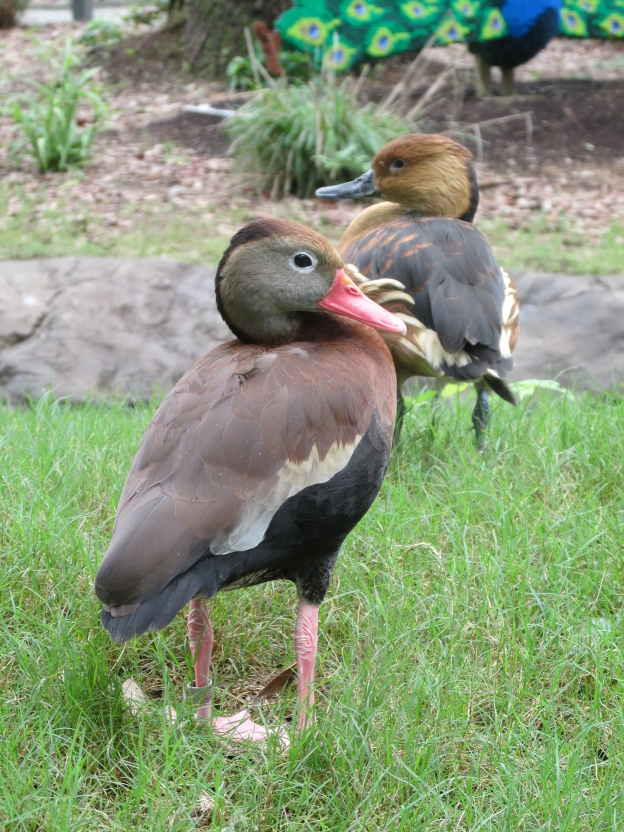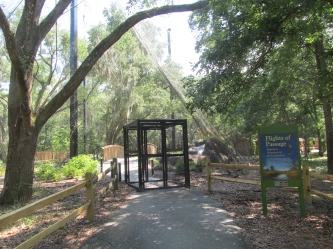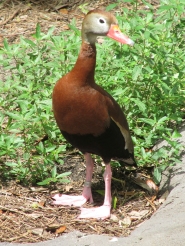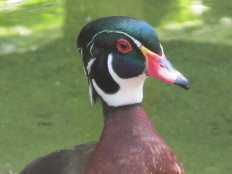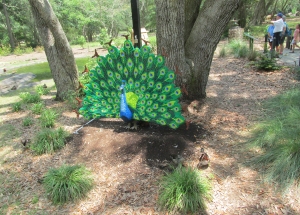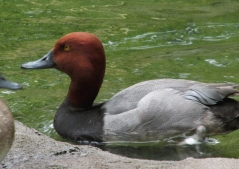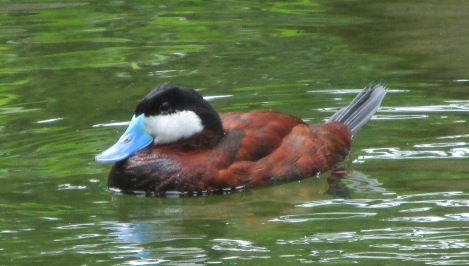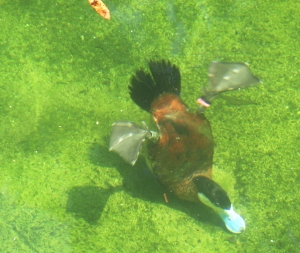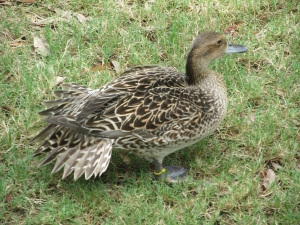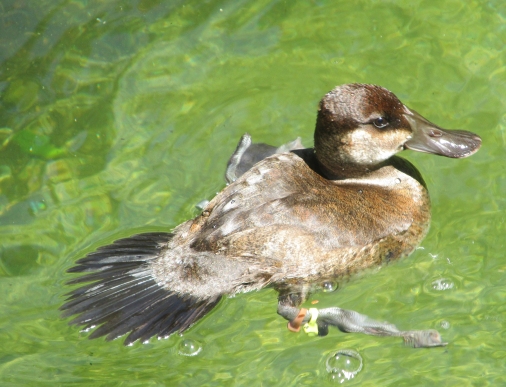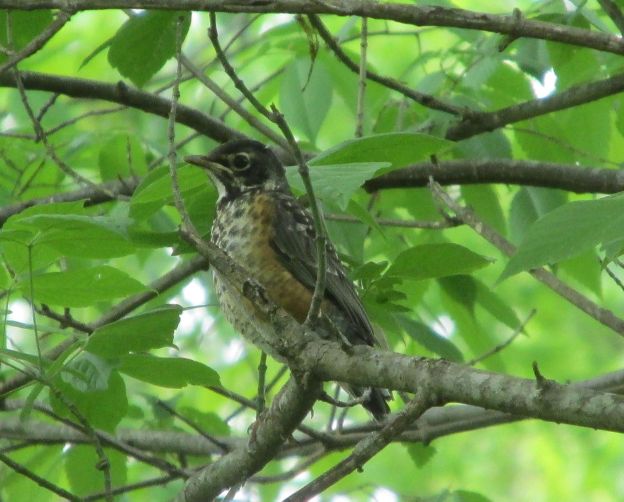
Photos by Bryan Stevens A male Painted Bunting feeds on millet seed at a feeder at Huntington Beach State Park in South Carolina.
I enjoyed a recent excursion to coastal South Carolina, which provided me a change to look for birds at such locations as Huntington Beach State Park and Brookgreen Gardens. These two attractions are two of my favorite places to bird when I get an opportunity to a stay at Pawleys Island in South Carolina.
Southwest Virginia, Northeast Tennessee and Western North Carolina share some colorful species of birds, including rose-breasted grosbeak, Baltimore oriole, scarlet tanager and indigo bunting. The vibrant blue plumage of a male indigo bunting makes it one of the most coveted birds at feeders. One of my earliest bird memories is one that recalls summer sightings of “blue birds,” or indigo buntings, perched in the same blue spruce tree with “yellow birds,” or American goldfinches. It’s very likely that such memorable childhood sightings set me on the path to becoming a birding and nature enthusiast.
It’s fun to speculate that I might have traveled that path even sooner if I’d observed in that blue spruce one of the relatives of the indigo bunting. The painted bunting, which I saw frequently during my South Carolina vacation, is often described as one of the most colorful birds in the United States. A male painted bunting’s plumage is an almost shocking blend of blue, green, yellow and red feathers, which make males appear almost too tropical for a bird that makes its home for part of the year in the United States. The color pattern for the male painted bunting consists of a blue head, a red eye-ring, red underparts and a green backs. Females and immature birds are a uniform, bright lemon-green overall, with a pale eye-ring. Two years are required for a male painted bunting to acquire the vibrant plumage that has given the bird its common name.

It’s easy to see how the male painted bunting acquired its reputation as one of North America’s most colorful birds.
The painted bunting is a specialty bird of the southern United States, as well as some locations in the southwestern United States, including southern Arizona and New Mexico. A thriving population exists along the Atlantic Coast in South Carolina, Georgia and Florida. These colorful birds also occur in Louisiana, Texas, Arkansas and Oklahoma. Some other common names for this bird include painted finch and rainbow bunting. Early French colonists to the New World named this songbird “Nonpareil,” which means “without equal.” That neatly sums up the amazing appearance of this bird.
Bird feeders help this bird overcome its shyness in the presence of humans. Huntington Beach State Park in South Carolina maintains several feeders filled with millet, which is a small seed favored by buntings, as well as some sparrows and finches. The feeders located at the park’s Nature Center are a popular destination for people hoping to get a good look at a painted bunting. Of course, the buntings share the feeders with other birds, including chickadees, cardinals, house finches, brown-headed cowbirds and red-winged blackbirds.

Female and immature painted buntings are greenish-yellow birds that are eclipsed by the more vibrant adult males.
Away from feeders, however, it can be difficult to find painted buntings. Males sing from elevated perches in spring and early summer, which can simplify the effort of locating them. The greenish females blend well with their surroundings and can be a much bigger challenge to observe. Once I learned to recognize the male’s song, finding painted buntings away from feeders became easier.
Before federal protections were put into place, painted buntings were often captured and caged as exotic pets. Although such practices are now illegal in the United States, these birds are still captured in some Central American locations for sale as a pet caged bird. I’ve always believed that it’s much more enjoyable to observe any bird free to fly, sing and live out its life in the wild.
The population of painted buntings has declined, particularly on barrier islands off the coasts of Georgia and South Carolina. Destruction of habitat has been a major factor, but these birds are also victimized by brown-headed cowbirds. The female cowbirds slip their own eggs into the nests of unsuspecting birds, which often raise the young cowbirds even at the expense of their own young.
Painted buntings do show up in some unexpected places, but there are only a few records for the region. In November of 2015, a male painted bunting showed up at Prospect Park in Brooklyn, New York, of all places. That particular bird lingered until Jan. 3, 2016, before it was last seen prior to a cold front moving into New York. The surest way to see a painted bunting is to visit some of its strongholds along the southern Atlantic Coast or the other regions in the United States where this technicolor dream of a bird ranges.
Until then, enjoy the painted bunting’s much more common, at least in this region, relative. The indigo bunting usually returns to the region in April and lingers into early October. Indigo buntings are also fond of visiting feeders for offerings of millet or sunflower seed.
Besides indigo buntings, other related birds include the lazuli bunting, varied bunting and blue bunting. Other birds named bunting, but not as closely related, include the snow bunting and the lark bunting. The term “bunting” when used with a bird basically refers to various seed-eating birds with stubby, cone-shaped bills.

The Lazuli Bunting takes the place of Indigo Buntings in the western half of the United States. This male was photographed in Utah.
Perhaps some day in the future I’ll glimpse a migrant painted bunting that has strayed off course and has ended up in southwest Virginia or northeast Tennessee. Until that hypothetical day, I’ll continue to look for this dazzling bird any time I am in the Low Country of South Carolina. In addition, I’ll simply enjoy the electric blue plumage of the adult male indigo buntings that visit my feeders almost daily during the summer months.
••••••
Bryan Stevens lives near Roan Mountain, Tennessee. To learn more about birds and other topics from the natural world, friend him on Facebook at https://www.facebook.com/ahoodedwarbler. He is always posting about local birds, wildlife, flowers, insects and much more.












